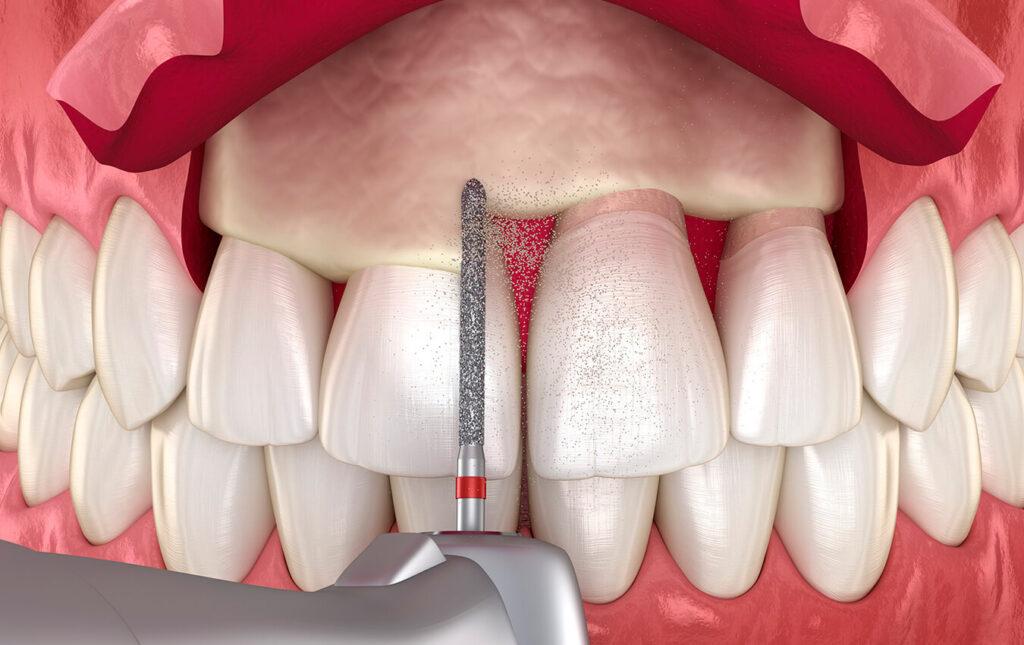
Benefits
Patients may have decay deep under the gum but the dentist may well be unable to access it. If he or she performs crown lengthening, it will help them reach the decay; otherwise the tooth will be lost.
Who is this procedure for?
- Patients whose teeth are broken below the gum line;
- Patients that have decay that extends below the gum line;
- Patients who wish to improve “gummy” smile.
What happens before the procedure?
You must have a visit with your dentist before the actual procedure. You will be instructed on how to do your oral hygiene after the surgery; in some cases patients receive tooth cleaning before the procedure.
If your tooth requires a crown, the dentist will use a temporary one to protect the tooth. This actually eases the process, as the tooth will be prepared for the crown and the dentist will now how much gum tissue he or she will have to be removed.
What happens during the procedure?
Crown lengthening is done under local anesthesia. The procedure starts by incising the gum tissue around the tooth and removing a certain height of the alveolar bone from the circumference of the tooth that is being operated on.
There must be a 3 mm distance between the dental restoration and the alveolar bone. This is known as the biological width, out of which 1 mm is occupied by the periodontal ligament, 1 mm is occupied by the soft gum tissue and the third 1 mm is the gum sulcus. The procedure takes about one hour to perform.
What happens after the procedure?
There is usually no post – op discomfort. The sutures are removed in 2 weeks and in most cases a five minute “touch – up” surgery is done after one month to determine the ideal tissue form. This procedure doesn’t require any sutures and has no post – op discomfort.

